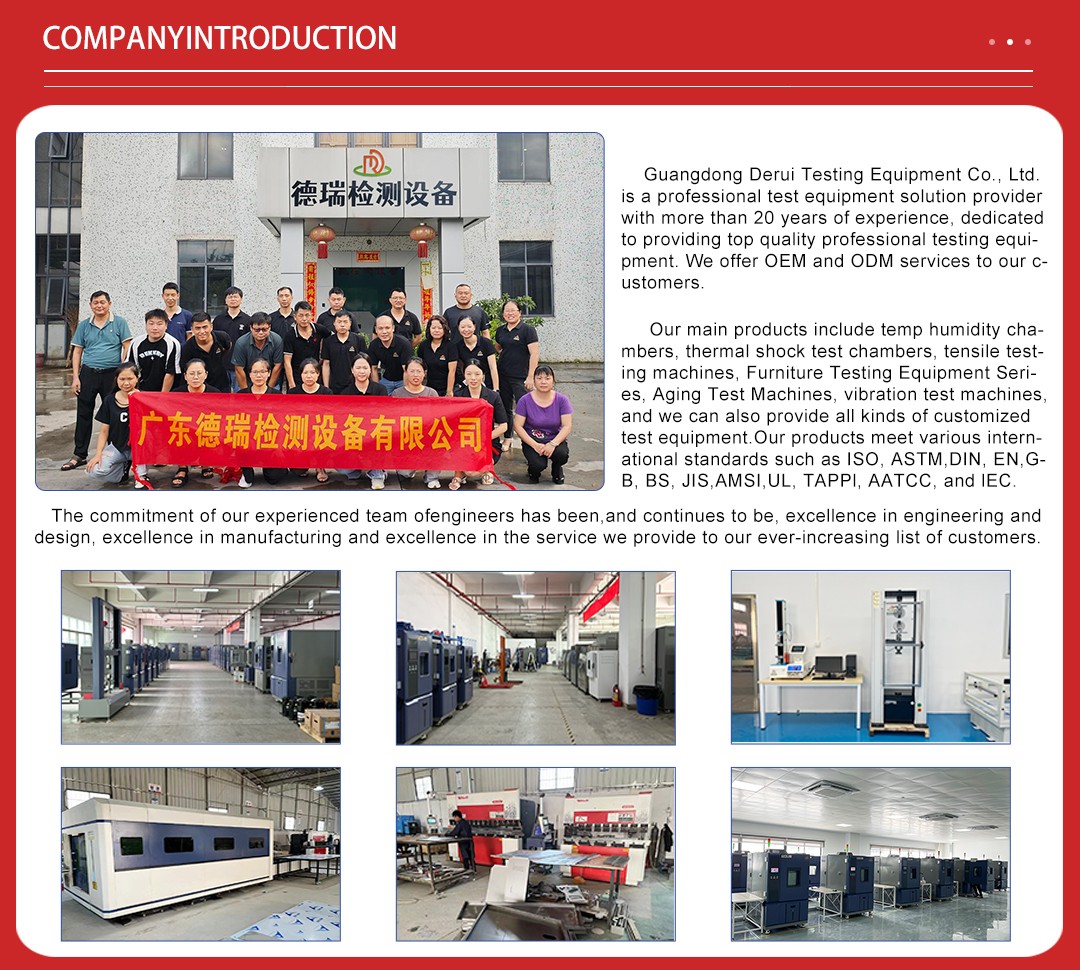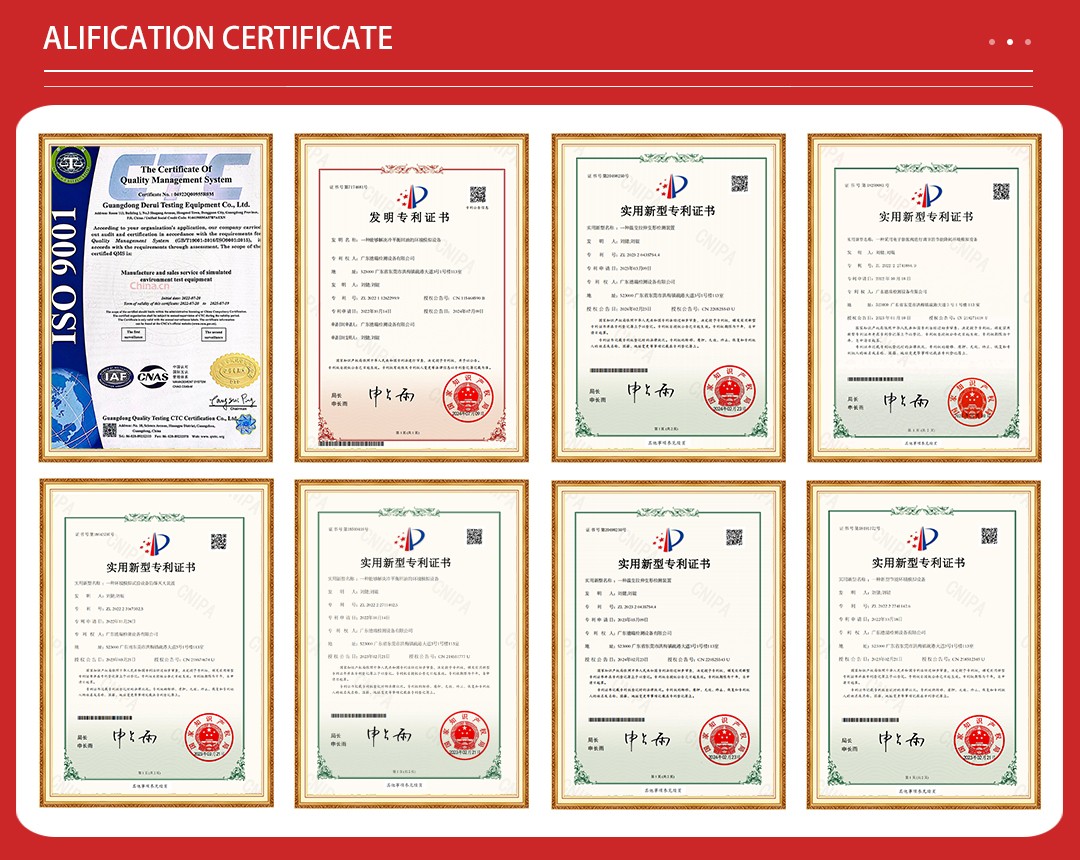
A high humidity low temperature test chamber is a specialized environmental testing device designed to simulate cold and moist conditions. This advanced equipment is instrumental in assessing the perf ...

A high humidity low temperature test chamber is a specialized environmental testing device designed to simulate cold and moist conditions. This advanced equipment is instrumental in assessing the performance and durability of materials, components, and products under extreme environmental stresses, making it a valuable tool for research and development across various industries.

The high humidity low temperature test chamber is applicable across a wide array of industries, each with unique testing needs. In the electronics sector, the chamber is employed to evaluate the reliability of electronic components and devices under cold and humid conditions, ensuring they function correctly in harsh environments. The automotive industry utilizes these chambers to test the resilience of vehicle parts and systems in low-temperature, high-humidity scenarios, mimicking conditions found in cold, wet regions. In the aerospace field, the chambers simulate the extreme conditions encountered at high altitudes and in space, ensuring the durability of materials and components. The pharmaceutical industry benefits from these chambers by assessing the stability and efficacy of drugs and medical products under varying environmental conditions. In the food and beverage sector, the chambers evaluate the impact of temperature and humidity on product quality, ensuring consistent shelf life, texture, and flavor. Additionally, the construction industry uses these chambers to test building materials under different environmental scenarios, ensuring longevity and structural integrity. Renewable energy sectors, such as solar and wind power, also leverage these chambers to evaluate equipment performance under diverse climatic conditions.

1. Versatility and Broad Applicability: The chamber's ability to simulate extreme cold and humid conditions makes it suitable for various applications across multiple industries, from electronics to automotive, aerospace, pharmaceuticals, food and beverage, construction, and renewable energy.
2. Precision and Accuracy: High precision in temperature and humidity control ensures reliable and repeatable test results, providing valuable insights into product performance. The chamber's advanced control system and high-precision sensors guarantee accurate simulation of real-world environmental conditions.
3. Efficiency and Productivity: Rapid condition cycling reduces testing time, increasing overall productivity and allowing for more tests to be conducted within a given timeframe. The chamber's programmable profiles and user-friendly interface enable easy setup and monitoring of testing parameters.
4. Durability and Reliability: Constructed with high-quality materials, the chamber is designed to withstand frequent use and extreme conditions, ensuring longevity and reliability. Built-in safety mechanisms, such as over-temperature protection and automatic shut-offs, ensure the safe operation of the chamber under extreme conditions.
5. Compliance and Certification: The chamber helps meet industry-specific environmental testing standards, ensuring regulatory compliance and facilitating product certification. By adhering to standards set by organizations such as IEC, MIL, and ASTM, the chamber ensures that products meet required quality and reliability benchmarks.

Working Principle
The high humidity low temperature test chamber operates on the principle of controlled environmental simulation. It uses a combination of advanced refrigeration systems and humidifiers to achieve the desired low temperature and high humidity levels. High-precision sensors continuously monitor the internal conditions, and a sophisticated feedback control system adjusts the settings to maintain the programmed environment. The chamber's internal air circulation system ensures uniform temperature and humidity distribution throughout the test space, providing consistent environmental conditions.
Installation Steps
1. Site Preparation: Ensure the installation site meets the chamber's space and utility requirements, including electrical power, water supply, and drainage.
2. Chamber Placement: Position the chamber in the designated location, ensuring it is level and secure.
3. Utility Connections: Connect the chamber to the necessary utilities, including electrical power, water supply, and drainage. Follow the manufacturer's guidelines for proper connections and grounding.
4. Control System Setup: Install and configure the chamber's control system, including the user interface and any necessary software.
5. Calibration: Perform initial calibration of the chamber's temperature and humidity sensors to ensure accurate and reliable test results.
6. Testing and Validation: Conduct initial testing and validation to ensure the chamber is functioning correctly and providing accurate environmental simulations.
Design Considerations
1. Chamber Size and Configuration: Select the appropriate chamber size and configuration based on the testing requirements and the size and shape of the products to be tested.
2. Temperature and Humidity Range: Determine the required temperature and humidity range for the specific testing application, ensuring the chamber can accurately simulate the desired environmental conditions.
3. Air Circulation and Distribution: Design the chamber's internal air circulation system to ensure uniform temperature and humidity distribution throughout the test space, providing consistent environmental conditions.
4. Safety Features: Incorporate built-in safety mechanisms, such as over-temperature protection and automatic shut-offs, to ensure the safe operation of the chamber under extreme conditions.
5. User Interface and Control System: Develop an intuitive and user-friendly interface and control system, enabling easy setup, monitoring, and adjustment of testing parameters.
6. Data Logging and Analysis: Integrate comprehensive data logging capabilities to enable real-time monitoring and post-test analysis of environmental conditions and product performance.
In conclusion, a high humidity low temperature test chamber is a crucial tool for industries requiring precise environmental simulation. Its versatility, precision, efficiency, and advanced features make it an invaluable asset for enhancing product reliability, ensuring regulatory compliance, and gaining a competitive edge in the market. By following the outlined installation steps and design considerations, users can maximize the chamber's effectiveness and achieve accurate and reliable test results.

| Model | DR-H201-100 | DR-H201-150 | DR-H201-225 | DR-H201-408 | DR-H201-800 | DR-H201-1000 |
| Internal dimension | 400*500*500mm | 500*500*600mm | 500*600*750mm | 600*800*850mm | 1000*800*1000mm | 1000*1000*1000mm |
| External dimension | 900*1070*1400mm | 1000*1070*1500mm | 1000*1170*1650mm | 1100*1370*1750mm | 1500*1180*1900mm | 1500*1380*1900mm |
| Voltage(V) | Sigle Phase 220V | Sigle Phase 220V | Sigle Phase 220V | Three Phase 380V | Three Phase 380V | Three Phase 380V |
| Temperature range | -20℃,-40℃,-70℃~150℃ | |||||
| Temp.& Humi.Adjust Way | Balanced Temperature Humidity Control System(BTHC),Intelligent PID Regulation | |||||
| Temperature fluctuations | ≤±0.7℃ (without load and temperature stable) | |||||
| Internal Chamber Material | Stainless Steel 304 | |||||
| External Chamber Material | Stainless steel or paint spray | |||||
| Temperature uniformity | ≤±0.7℃ (without load and temperature stable) | |||||
| Temperature deviation | ≤±1.0℃/ ±2.0℃ (without load and temperature stable) | |||||
| Heating rate | 3℃/min in average | |||||
| Cooling rate | 1℃/min in average | |||||
| Humidity range | 20%~98%RH | |||||
| Humidity deviation | 1 、≥75%RH:≤±3%RH ;2 、≤75%RH :≤±7%RH | |||||
| Cooling Method | Single-stage compression,Second-stage Compression; | |||||
| Refrigerator | Hermertically Sealed France Tecumseh Compressor or Semi-hermetic BOCK Compressor | |||||
| Cooling Method | Air-cooled | |||||


Not search wanted products